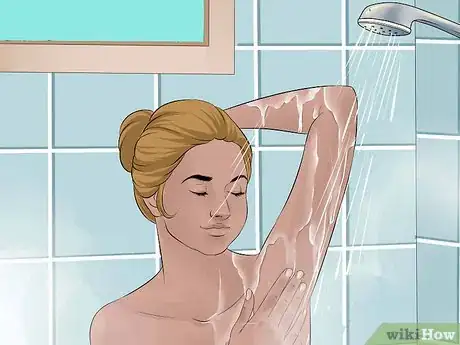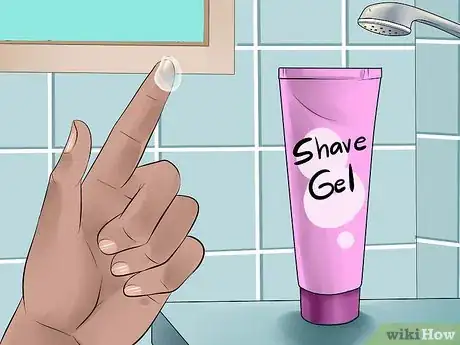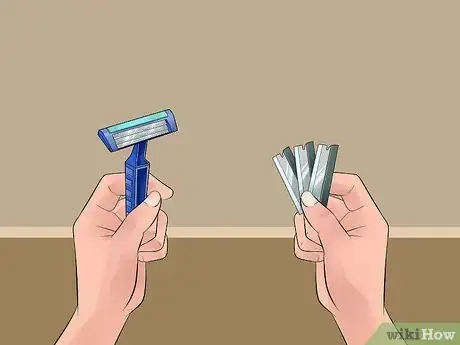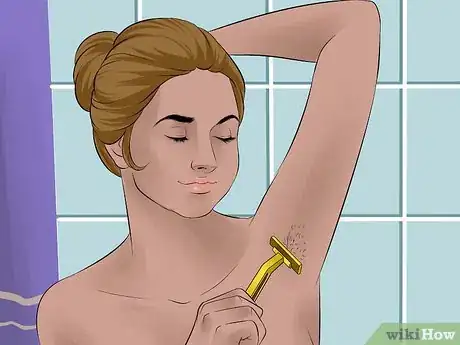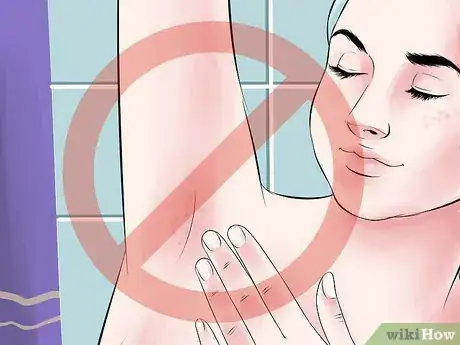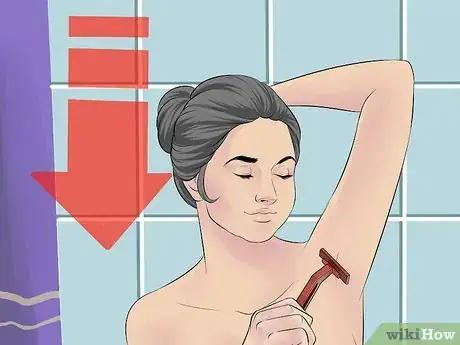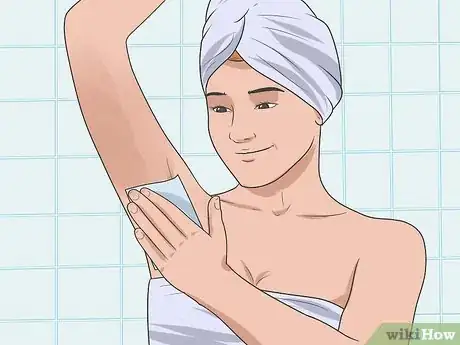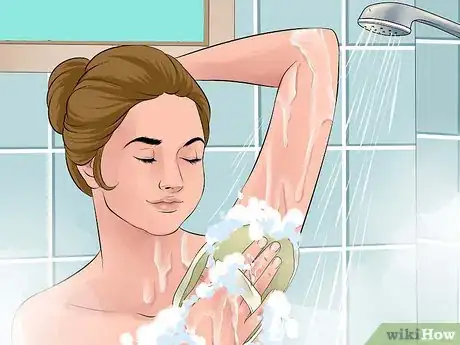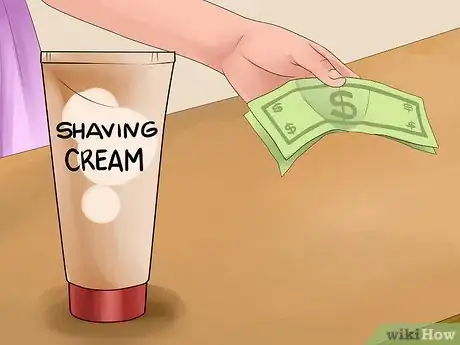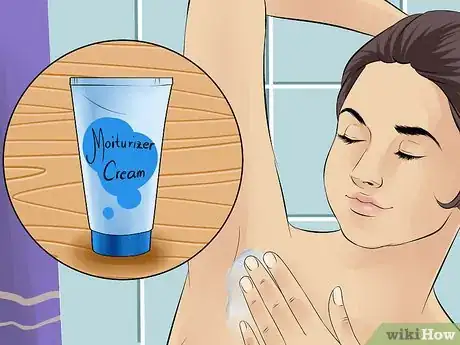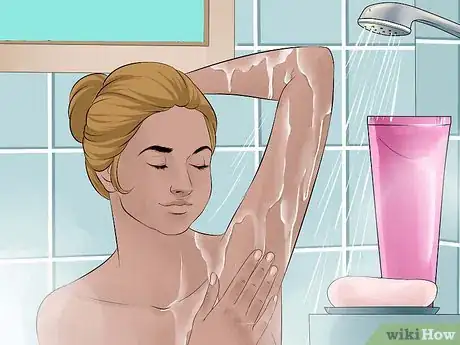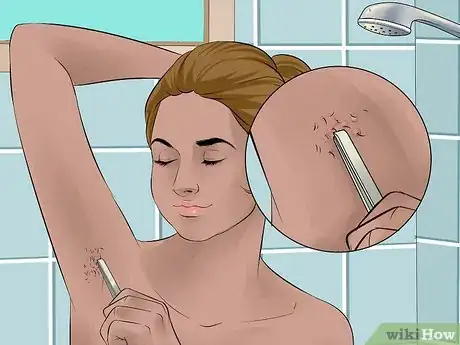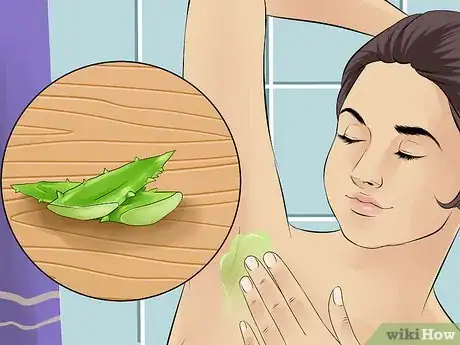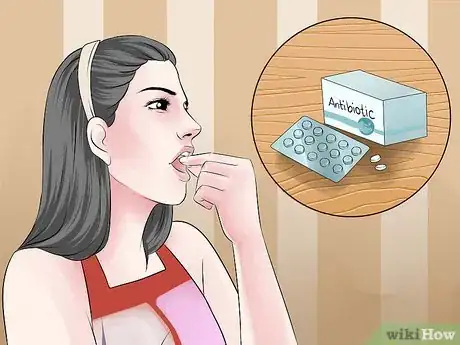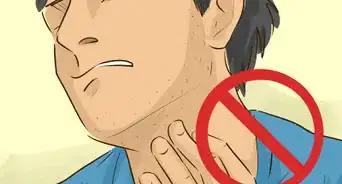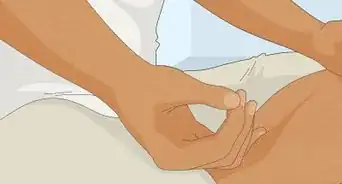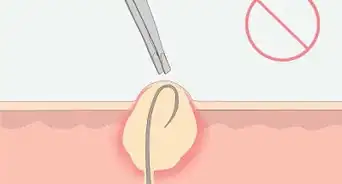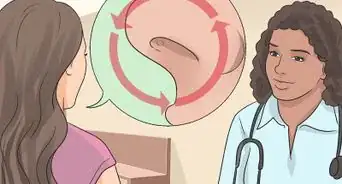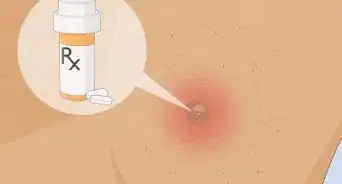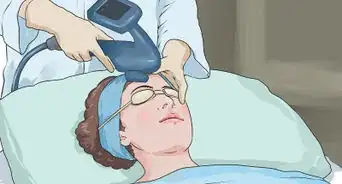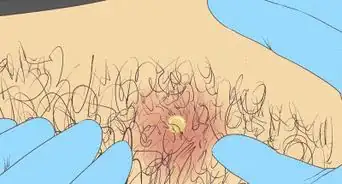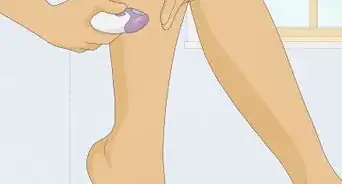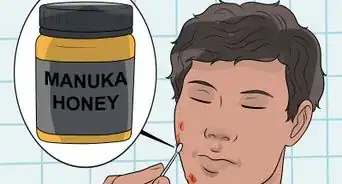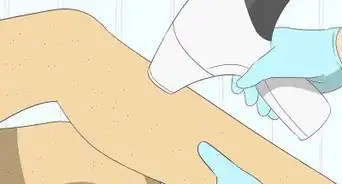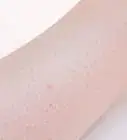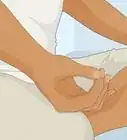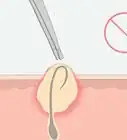This article was medically reviewed by Mark Ziats, MD, PhD. Dr. Mark Ziats is an Internal Medicine Physician, Scientist, Entrepreneur, and the Medical Director of xBiotech. With over five years of experience, he specializes in biotechnology, genomics, and medical devices. He earned a Doctor of Medicine degree from Baylor College of Medicine, a Ph.D. in Genetics from the University of Cambridge, and a BS in Biochemistry and Chemistry from Clemson University. He also completed the INNoVATE Program in Biotechnology Entrepreneurship at The Johns Hopkins University - Carey Business School. Dr. Ziats is board certified by the American Board of Internal Medicine.
There are 12 references cited in this article, which can be found at the bottom of the page.
This article has been viewed 208,807 times.
Ingrown hairs can happen anywhere hair grows on the body. It occurs when a hair follicle curls beneath the surface of the skin. The area often becomes inflamed and red, causing pain. Ingrown hairs typically appear after shaving. Shaving cuts the shaft of the hair. This unevenness, coupled with the sharpness of the remaining follicle, can make the hair curl back into the skin. Armpits are an especially sensitive area of the body where ingrown hairs are common, but with a little care ingrown hairs in the armpit can be prevented.
Steps
Preventing Ingrown Hairs While Shaving
-
1Wet your armpit thoroughly before shaving. Wet armpit hair, and wet hair in general, cuts much more easily than dry hair. When the hair is dry, it is much stronger, so when you are shaving dry hair, the razor tugs harder at the hair, causing it to break improperly. It is best to allow your underarms to soak for at least five minutes before shaving.[1]
- It is better to shave more towards the end of your shower or bath so that your armpit hair has had time to absorb the water.
- Use warm water as opposed to cold or cool water, as this will help to soften the hair follicle and also open up the pore around the follicle so that the hair can be cut closer to the base.[2]
-
2Choose shaving gel instead of shaving foam. Shaving foams tend to cause underarm dryness, which can lead to irritation and ingrown hairs when shaving. Choose special shaving gels made for those with sensitive skin. They are usually well lubricated.[3]
- If you have sensitive skin, you might want to choose a more gentle alternative to shaving gel or shaving foam like coconut oil or hair conditioner.
Advertisement -
3Choose a high-quality razor and replace the blades often. Purchase multi-use, changeable razors with at least three blades and a rotating head. Disposable one- or two-blade razors tug at the skin and wear out quickly.
- Using an electric razor can prevent ingrown armpit hairs because it does not cut as deeply as disposable razors.
- Old razor blades are notorious for creating ingrown hairs, so make sure you change your razor often.
-
4Shave with the grain. While many might prefer shaving against the grain to achieve more smoothness, shaving with the grain of your hair will cut the hair straight and leave it long enough so it isn't trapped beneath the skin.
- This can be a little challenging when shaving your armpits, as the hairs may actually be growing in different directions. Do your best to follow the direction of growth as you shave.
-
5Don’t stretch your skin. Avoid stretching the skin taut when shaving. This will reveal more of the hair from under the skin and cause you to cut the hair too short. Cutting/shaving so close to the skin’s surface will only increase the likelihood of an ingrown hair.
- Apply light pressure. Shaving too hard can cut your skin, causing the area to inflame and hairs to be caught under the inflammation.
- Run your razor over an area only once. Repeated strokes can aggravate the skin.
-
6Decrease how frequently you shave. Some people simply have skin that is too sensitive for daily shaving. If you are getting repeated ingrown hairs despite your best efforts, it might be time to start shaving less often.[4]
- Longer hairs are less sharp at the ends, so they are less likely to curl around and break through the skin to create an ingrown hair.
-
7Consider alternative methods of hair removal. One way to stop ingrown armpit hairs is to stop shaving the area entirely. If you're not down to grow out your armpit hair, you can try removing the hair using a different method, such as laser removal or waxing.
- Laser hair removal is an effective solution to removing armpit hair.[5] After three to seven sessions, the hair removal may even be permanent, which may offset the fact that it's a fairly expensive procedure. Don't let just anyone perform laser hair removal — check the credentials of the doctor or technician who will be performing the procedure.[6]
- Though there are at-home waxing kits you might use on your underarms, it's such an awkward spot to try and remove hair you might want to leave it to the professionals. Your hair will have to be a little longer before waxing so that the wax can really grip the hair — usually about 1/2 inch for your first few waxes.[7] The wax will remove the entire hair from the follicle, including the root. Waxing will not completely prevent ingrown hairs, but it may make them less likely to occur. Make sure you continue to gently exfoliate after the procedure.
Preventing Ingrown Hairs By Moisturizing and Exfoliating
-
1Exfoliate your skin regularly. Scrub your armpits with an exfoliating pad or glove covered with water and an exfoliating soap. This will remove the dirt and oil on the surface of your armpit skin that prevents hairs from emerging.
- The frequency with which you exfoliate depends entirely on your skin type. Most people can exfoliate two to three times per week, even on sensitive skin like under the armpits; however, if you notice that the skin is reacting negatively to exfoliation (redness, tenderness, etc.), you should immediately stop exfoliating as frequently.
- When exfoliating, you can also use a loofah or special exfoliating sponge. For the best results, rub the loofah/sponge in small, circular motions on the armpit skin you are attempting to exfoliate.
-
2Consider buying topical creams that contain salicylic acid. These creams work well at preventing razor burn. They are also widely used for preventing ingrown hairs.[8]
- You can use these creams daily, but make sure you apply after every time you shave and/or shower for the most effective help in preventing ingrown armpit hairs.
-
3Moisturize the area often. Using a moisturizer regularly can help smooth your underarms, which makes for a quick and easy shave.[9]
- Make a habit of applying the moisturizer to your skin every time you get out of the shower.
- Moisturizing is key to preventing ingrown hairs, even in areas like the armpit that you typically want to keep dry. Moisturize after showering, but allow your skin enough time to soak up the hydration before applying other topical elements like deodorants or antiperspirants.
-
4Keep your skin clean. Regular washing will keep dirt and oil off the area. As dirt and oil builds up, the chances of producing an ingrown hair increases. This is especially important in an area like the armpit where sweat and odor are produced with greater frequency and pores can be clogged by regular use of products like deodorants and antiperspirants.
- On days that you might not have time to shower, use a wet washcloth and some mild soap to quickly wash your armpit area to remove any dirt, oil, or residue from your deodorant that may have accumulated since your last shower.
Treating Ingrown Hairs
-
1Get the hair out. An ingrown hair needs to come out. Stop shaving or waxing the area immediately when you notice an ingrown hair and let it grow for a little bit. Under no circumstances should you break the skin or dig into the skin to reach an ingrown hair.[10] Let it reach the surface on its own to avoid more damage to your sensitive skin.
- You can usually use tweezers to extract ingrown hairs in your armpit if they are protruding from the skin slightly. But remember, never break the skin to get an ingrown hair.
-
2Soothe your irritated armpit skin. Having an ingrown hair can really damage and irritate healthy skin, especially when it’s in a sensitive area like the armpit. Try soothing your armpit skin by applying some aloe vera or some gentle moisturizer to the affected area.[11]
- Try to do this during a time that you can relax and let the aloe soak up into the skin. If you have to leave the house immediately, the aloe will rub off and be less effective.
- Though not proven to help, there is some evidence that using a topical retinoid may help decrease redness and swelling.[12]
- Low dose corticosteroid cream can be applied to the affected area for immediate relief, but because long-term use of corticosteroids can thin your skin, it should only be used sparingly.
-
3Get antibiotics. Sometimes there is a chance for infection if bacteria seeps into the opening of your skin caused by the ingrown hair. Watch for continued signs of redness and discomfort over the course of more than a few days. If the pain and redness doesn’t dissipate, seek medical attention. Your doctor may need to prescribe you a small dose of antibiotics.[13]
Warnings
- Avoid moisturizers that will clog your pores. This will lead to more, rather than fewer, ingrown hairs.⧼thumbs_response⧽
References
- ↑ http://www.webmd.com/skin-problems-and-treatments/guide/ingrown-hair-causes-symptoms-treatment?page=2
- ↑ http://www.ncbi.nlm.nih.gov/pubmed?term=14717405
- ↑ http://www.differencebetween.net/miscellaneous/difference-between-shaving-foam-and-gel/
- ↑ http://www.webmd.com/skin-problems-and-treatments/guide/ingrown-hair-causes-symptoms-treatment?page=2
- ↑ http://www.ncbi.nlm.nih.gov/pubmed?term=12140474
- ↑ http://www.webmd.com/beauty/hair-removal/laser-hair-removal?page=1
- ↑ missoulawaxing.com/faq/
- ↑ http://www.healthcare-online.org/Ingrown-Armpit-Hair.html
- ↑ http://www.skinacea.com/how-to/treat-ingrown-hairs.html#.Vw_ldPl97IU
About This Article
To prevent ingrown armpit hairs, try using a shaving gel instead of shaving foam, which can cause underarm dryness that leads to irritation and ingrown hairs. Also, make sure you're using a high-quality razor with a rotating head and at least three blades, and always replace the blades when they wear out. When you're shaving, try not to stretch your skin taut or shave against the grain for a closer cut, since that can actually increase your chances of ingrown hair. Furthermore, keep at-risk areas safe by exfoliating and moisturizing regularly to prevent dryness and keep your skin clean. For more advice from our Medical co-author, like how to treat ingrown hairs, scroll down.
